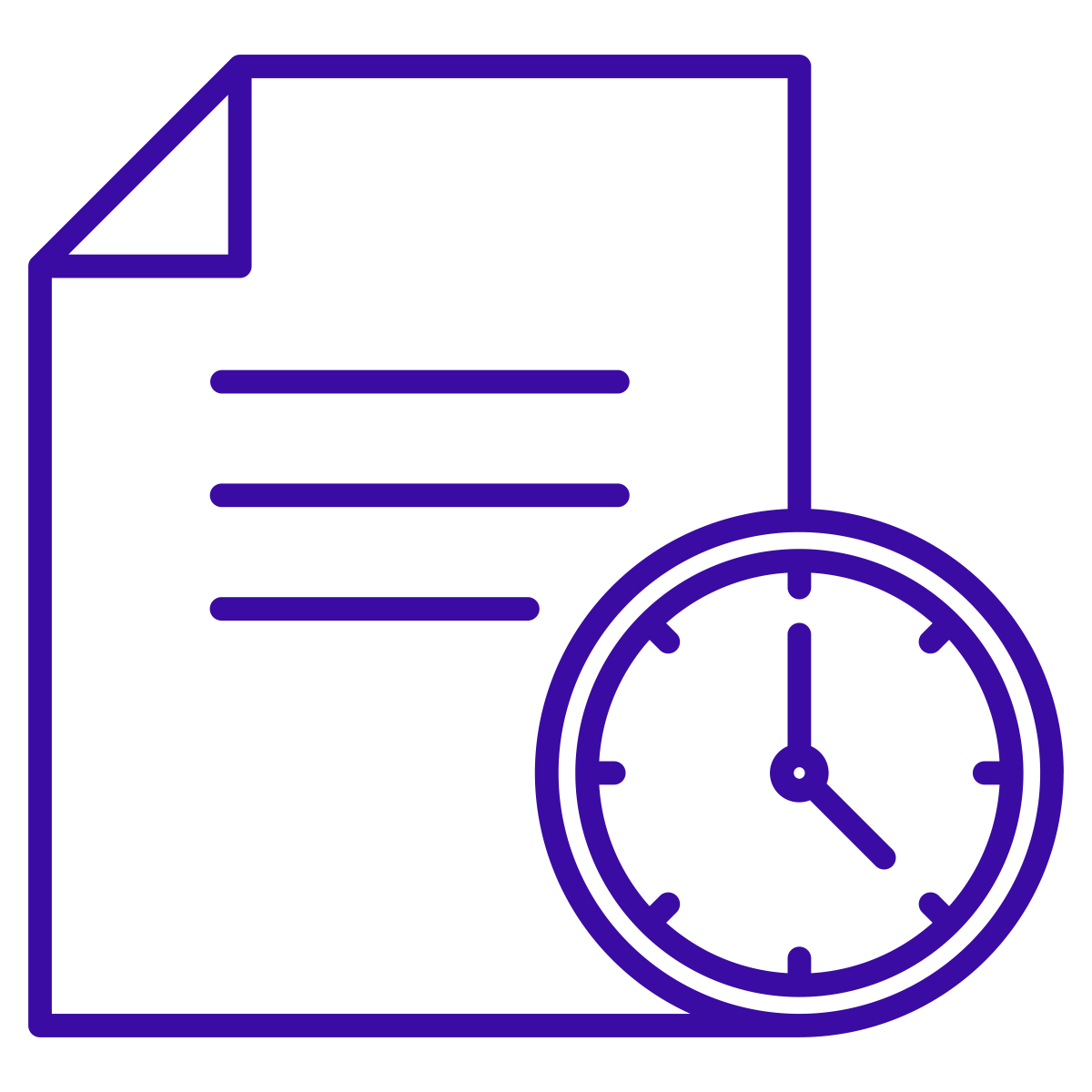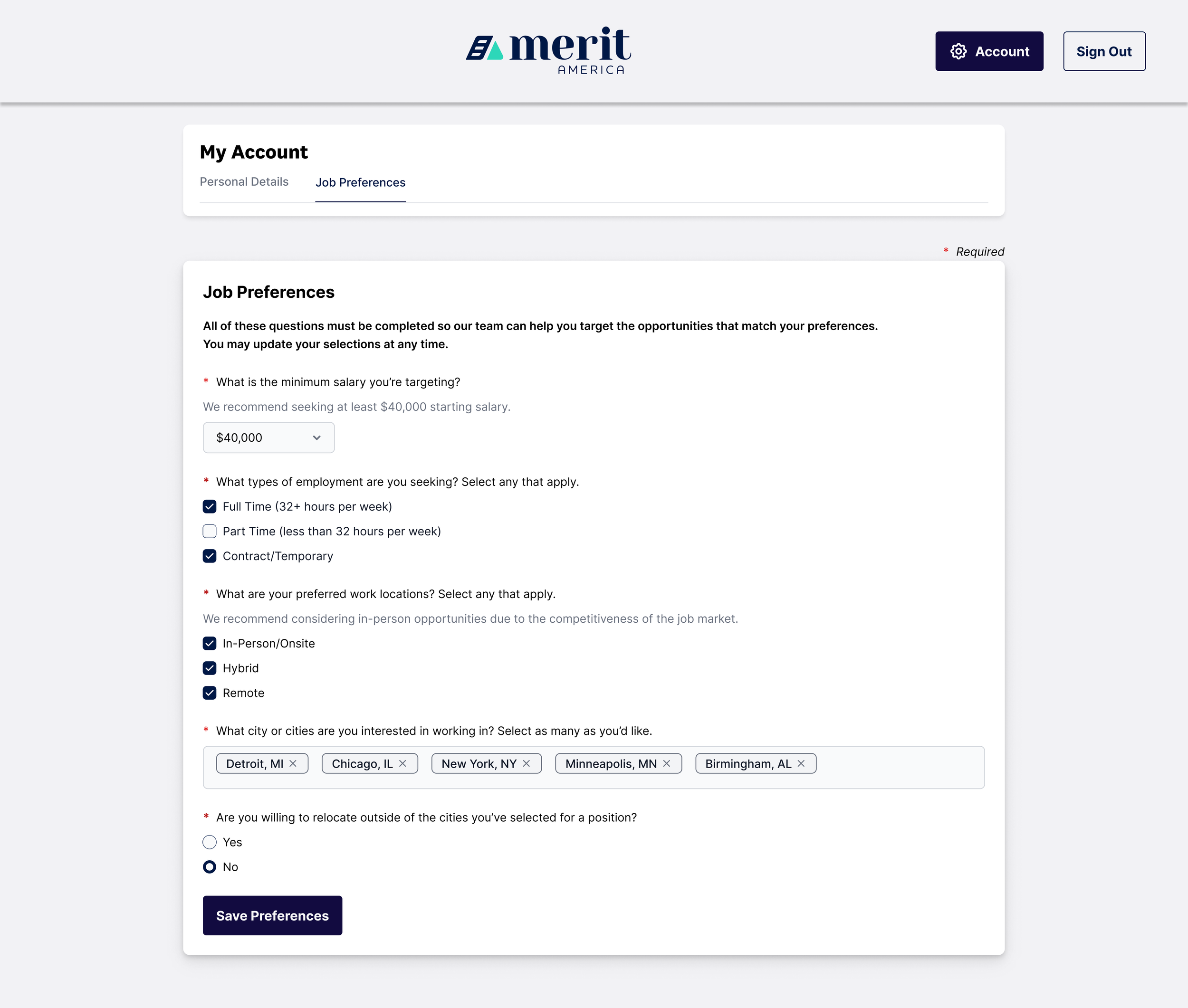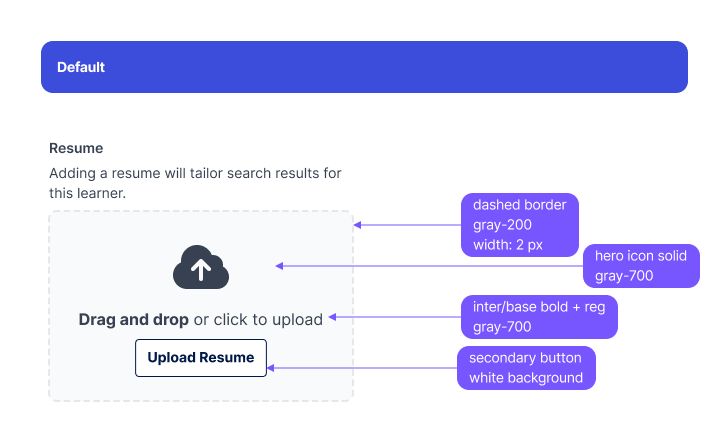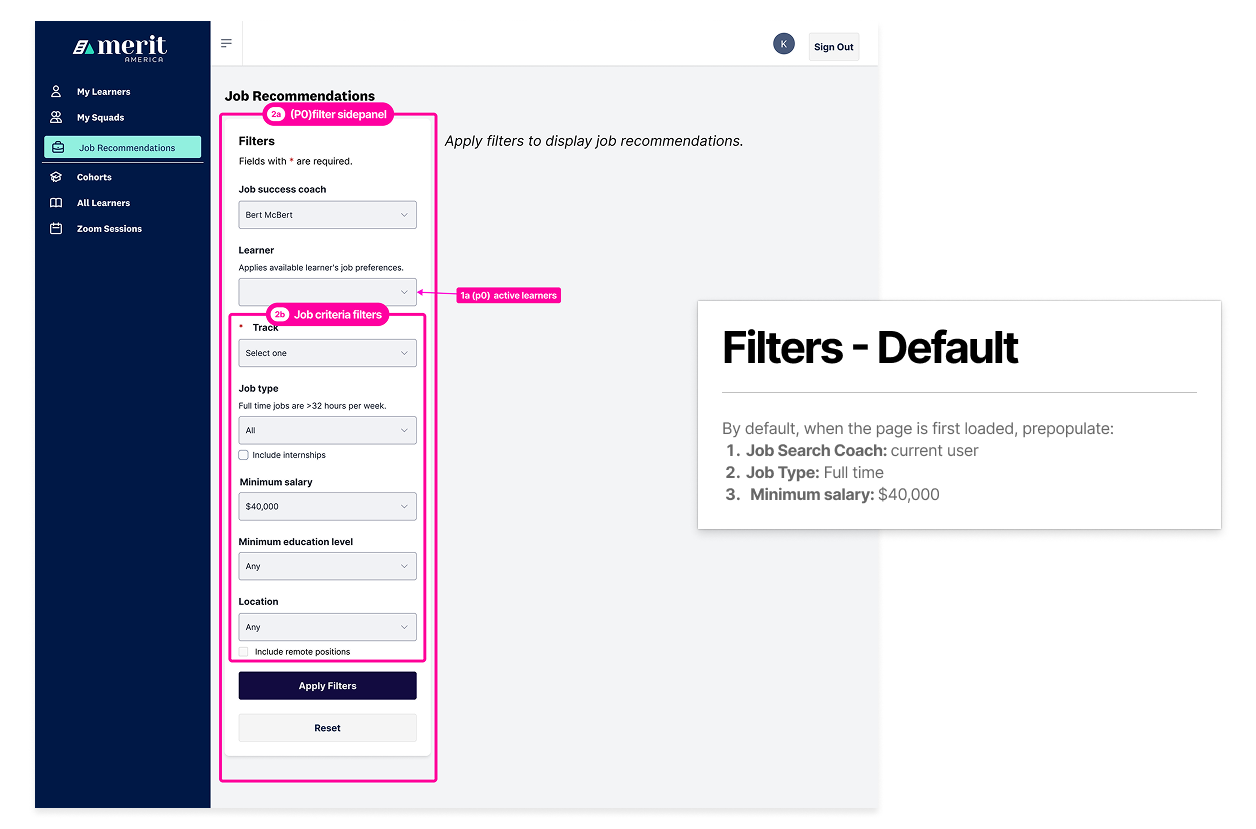Merit America
UX Research + Design
Background
Merit America’s mission is to support people stuck in low-wage jobs to upskill into careers that pay a living wage. Surfacing relevant, attainable job opportunities based on learners’ real-world experience is essential for success, for both the learners and the coaches supporting them.
My Role
I led UX design from discovery through handoff. To do so, I collaborated with:
2 PMs (at different phases)
2 Engineers
External partner Adept ID, who provided the AI behind resume parsing and skill-based job search.
Process
Discovery
Get to know the primary and end users
Understand the problems to be solved
Alignment
Draft + prioritize use cases
Scope size of feature and engineering’s appetite
Align with org’s strategic goals
Design
Ideate on solutions
Collaborate with engineering to introduce necessary new components
Validate
Conduct usability tests with end users
Make updates based on results
Delivery
Annotations
Update design system
Bug and UAT
Discovery
Methods
Interviews
Spoke with Job Success Coaches (JSC) to map workflows and pain points.
Contextual Inquiries
Observed how JSCs completed their daily tasks + the tools they were hacking together.
Learner Feedback (Indirect)
Coaches filtered commentary from learners which highlighted confusion around job matches.
Defining the Problem
Job Success Coaches were spending hours manually combing job boards for roles for which learners might qualify. The effort was exasperated by:
Too many job boards to search individually.
Too much wasted time uncovering the exact same job postings across all the varied job search platforms.
Too much manual and mental labor comparing learners’ resumes to job postings trying to identify transferable skills.
The result of these inefficiencies left coaches unable to effectively identify enough relevant job postings for their learners, leading to lowered learner confidence in their own abilities to change careers.
Alignment
Based on the results of our early research, the PM created a list of use cases to address the issues faced by Job Success Coaches. Then, as a team of UX, PM, and Engineers, we prioritized these use cases to 4 core requirements.
Priority 1: Consolidate
As a Job Success Coach, I want one platform that searches across all major job boards so that I can save time and avoid reviewing the same postings multiple times.
Priority 2: Learner Specific Search
As a Job Success Coach, I need resume parsing that identifies each learner’s transferable skills and experience so that I can quickly surface relevant job opportunities without manual comparison.
Priority 3: Improve Recency
As a Job Success Coach, I want assurance that job postings are high quality and up to date so that I can confidently share credible, current opportunities with learners.
Priority 4: Activity Record
As a Job Success Coach, I want to see a history of jobs I’ve shared with each learner so that I can review learner success rates.
After initial designs and async feedback from Job Success Coaches, we determined an activity log wasn’t needed for MVP. The data already existed in Hex, allowing JSCs to work with the Data Science team to access it.
Design
When it’s time to hit Figma, and start crafting designs, there are two core parts of my process:
Work smarter not harder
Leverage what already exists. I start by answering these questions:
How much of the existing page can I save?
Can I solve this feature without creating new components?
What other features already exist (internally and externally) that have a similar workflow?
OG Job Rec Feature
Keep:
Field names
Instructional text
Change:
Standardize input field length
Move instructional text into field name to be permanently visible
Reorganize input field order
Call-to-action button text
Horizontal to vertical filter bar
OG Job Posting Result
Only remove job description text because it is too variable based on how job postings are structured. Removal saves vertical space and cognitive load.
Competitive Feature Analysis
Sampled complex filter layouts and interactions across e-commerce sites.
Collaborate with engineers early
Float potential new components + workflows early to identify cost and feasibility. This feature was going to require:
Document upload
Parsed data previews
An open input search field that allowed multi-select
Optional: floating headers in main page content
Working with engineering early allowed them time to investigate suitable components in Tailwind and start laying the groundwork while they waited for final designs.
Start the backend work to make sure all connections to the frontend are accounted for in final designs.
For this project, learners input their job search preferences, which populate in the Merit America Admin platform, and need to align with Adept ID’s parameters.
Learner inputs their job search preferences
Learner’s input populates in admin site and smart search filter
Validate
Participants
Four Job Success Coaches (Power Users)
Methods
Moderated A/B + Usability testing
Post test interview
Tasks:
Select a learner and upload a resume
Review parsed resume results
Review learner specific job filters
Select and share job postings
Job Success Coaches didn’t need to confirm parsed resume data every time.
They trusted that the AI was doing a decent job and felt that only edge cases would require edits. This removed an unnecessary step in the workflow.
Results
Regional filtering is a critical behavior.
In addition to learners specifying locations to search for jobs, JSCs were each responsible for all learners looking within specific regions.
Desire for more transparency in job matching.
JSCs wanted to understand why certain jobs were being recommended, what keywords or skills triggered the match, so they could better explain results to learners and build trust.
The Final Designs
A Job Success coach begins their search for a specific learner. By default, the JSC field and minimum salary are pre-filled.
The JSC selects the learner, Bert McBert. This learner has some information prefilled but no resume.
The JSC uploads a resume for Bert McBert, and opens the preview modal to review the parsed results.
The JSC applies filters and is presented with a list of jobs that are recommended for Bert McBert.
Once one or more positions have been selected, the JSC can proceed to “Share” the positions with Bert McBert.
Bert McBert is pre-selected. The JSC has the option to select additional learners and share these positions with them.
The learner will receive an email with those recommendations, while the JSC is returned to the search page. The JSC may continue searching for Bert McBert, or clear and start a new search.
Delivery
To support engineers ability to produce the optimal experience, I provided:
Page-by-page spec documentation in Figma, including all edge cases and error states
Component usage guide, especially for net-new elements like the resume upload pattern
Input field annotations
Default upload pattern annotations
Successful upload pattern annotations
Error upload pattern annotations
Full page view including tagged use cases to assist PM in tracking success metrics.
Post build, I participated in QA testing and final tweaks. I provided design context when unexpected behaviors or edge cases emerged along with async feedback on visual polish and component behavior in staging environments.
Final Results
Reduced Time
Less time searching = more job postings per learner per week.
Improved Posting Recency
AdeptID improved their AI resulting in more relevant jobs.
Design System Improvements
New components and interactions were created and codified, increasing future design velocity.

























